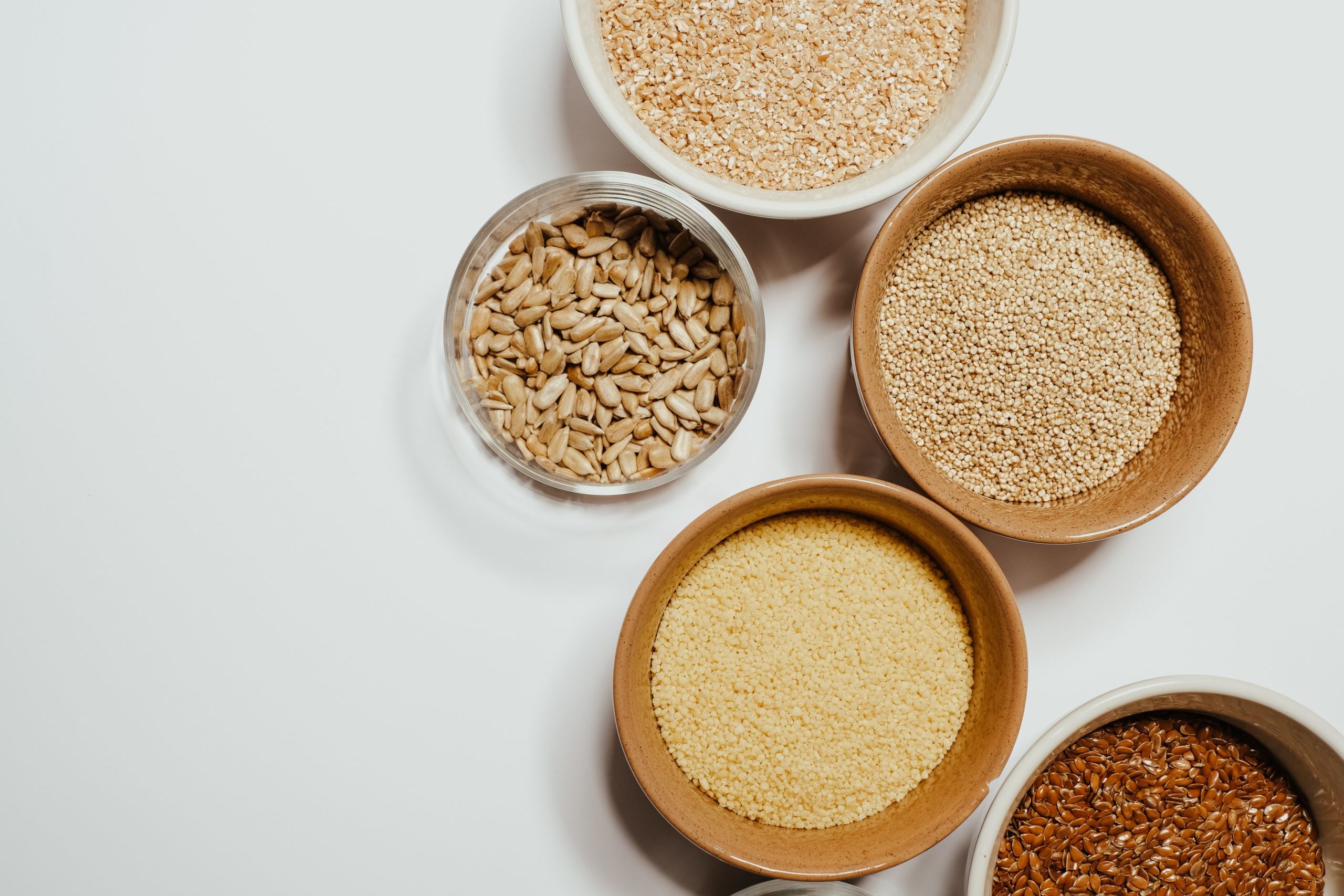6 Mins Read
African cuisine is full of super grains, surprising grasses, and protein-rich ingredients that will elevate your palate.
Not only are these foods healthy, but buying them can also support developing economies — and sourcing them is as simple as a click online.
The following are some of the most versatile African pantry staples to start cooking with.
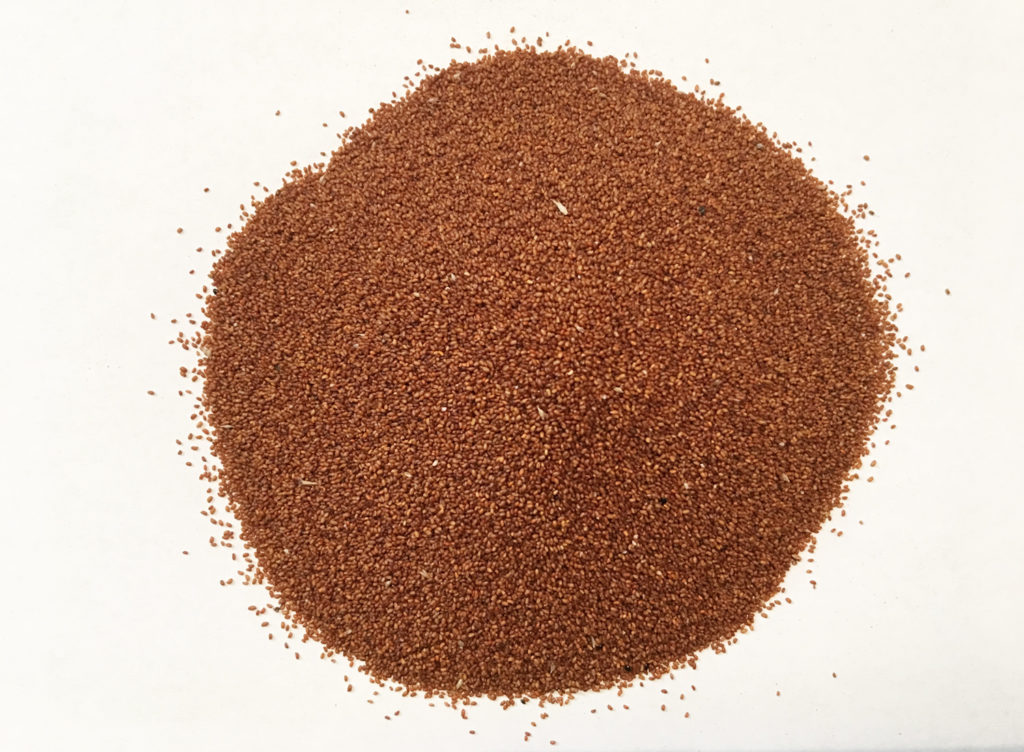
1. Teff
What is it: Teff is a tiny ingredient that packs a huge nutritional punch. Coming from the Horn of Africa, it is widely used in Ethiopian cuisine (one of our personal favourites). It looks and functions like a whole grain but is actually a grass, commonly called Williams’ lovegrass or annual bunch grass. A type of millet, teff is a gluten-free ingredient that can be used in foods for coeliacs. It looks a little like a combination of flax and poppy seeds.
How to cook it: Teff can be prepared in a number of ways. It can be simply simmered, as you would whole grains, before being added to other dishes. It is frequently used as a topping for recipes that need an extra sprinkle of goodness. Teff aficionados suggest toasting it lightly before simmering, then fluffing with a fork, a la quinoa and couscous. This is not essential but adds a richer, nuttier undertone. Teff porridge and stuffings are possible, but it can be ground into flour to make it exceptionally multipurpose.
What does it taste like: Like a lot of grains, there is a natural nutty and earthy flavour, though teff has a distinctly floral note, with many saying it has a hazelnut vibe. Darker or toasted styles have been said to have notes reminiscent of chocolate.
Where can it be bought: Most health food shops and increasingly, some supermarkets are starting to stock teff, thanks to the gluten-free community spiking demand.
Buy it online here.
Read: 5 Reasons Why We’re Obsessed With Ethiopian Food
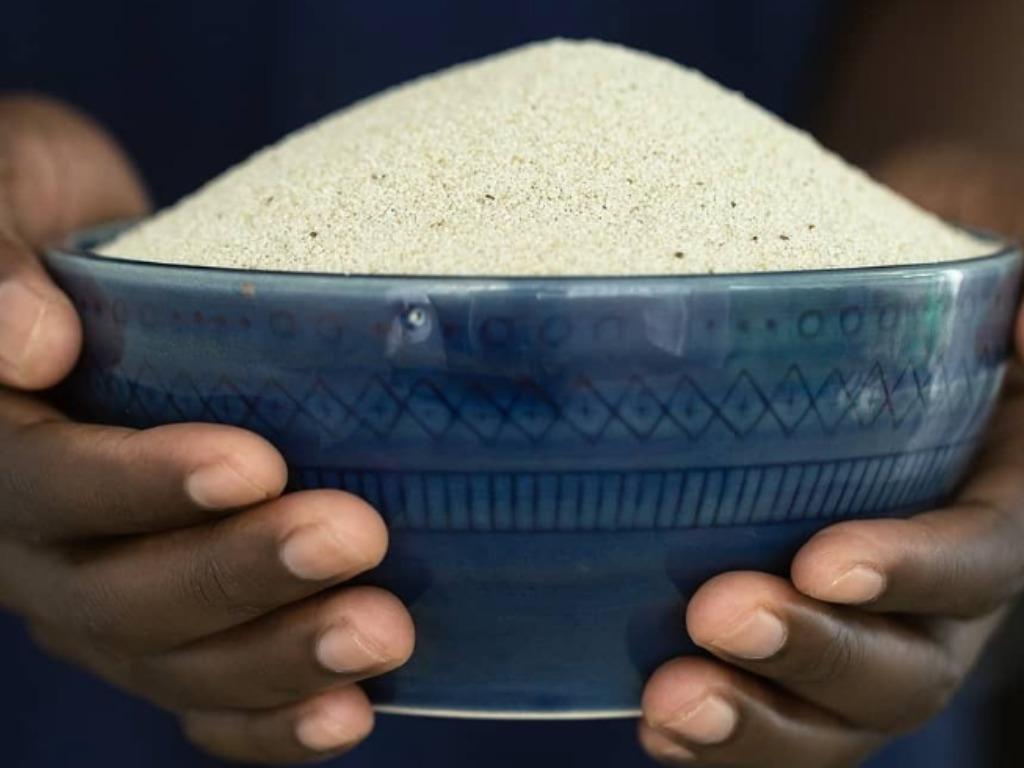
2. Fonio
What is it: Another tiny ingredient, hailing from West Africa. Fonio is one of the hardiest grains, meaning that it offers a sustainable living for farmers in Africa, being able to grow in almost all conditions. An easy-to-cook millet, it is considered West Africa’s oldest cultivated cereal and has to be processed by hand, making it, so far, unexploited by commercial sellers. A bonafide future food, fonio offers gluten-free nutrition and can be prepared in numerous ways. It looks like extra small couscous grains and can be used in comparable ways.
How to cook it: Fonio can be used in multiple ways. The most common include as a substitute for fluffed couscous or as a topping for stews, soups and other dishes. It makes a creamy and neutral porridge and again, can be ground for use in place of conventional flour. Simple simmering is the easiest way to prepare fonio.
What does it taste like: As a base, it is very earthy tasting, with an almost dusty element, but it absorbs flavour very well. It is not as neutral as teff but is just as versatile. Unseasoned and unflavoured, fonio is a slightly acquired taste but for anyone that steers clear of processed foods, as a rule, you will most likely enjoy its unfussy realness straight away.
Where can it be bought: Not yet a super common find in shops, apart from African ingredients specialists, you will have the most luck finding fonio online. Be aware that due to the hand processing necessity, and the economic support that the food offers, this is not a cheap substitute for quinoa et al. It is, however, a worthwhile one.
Buy it online here.
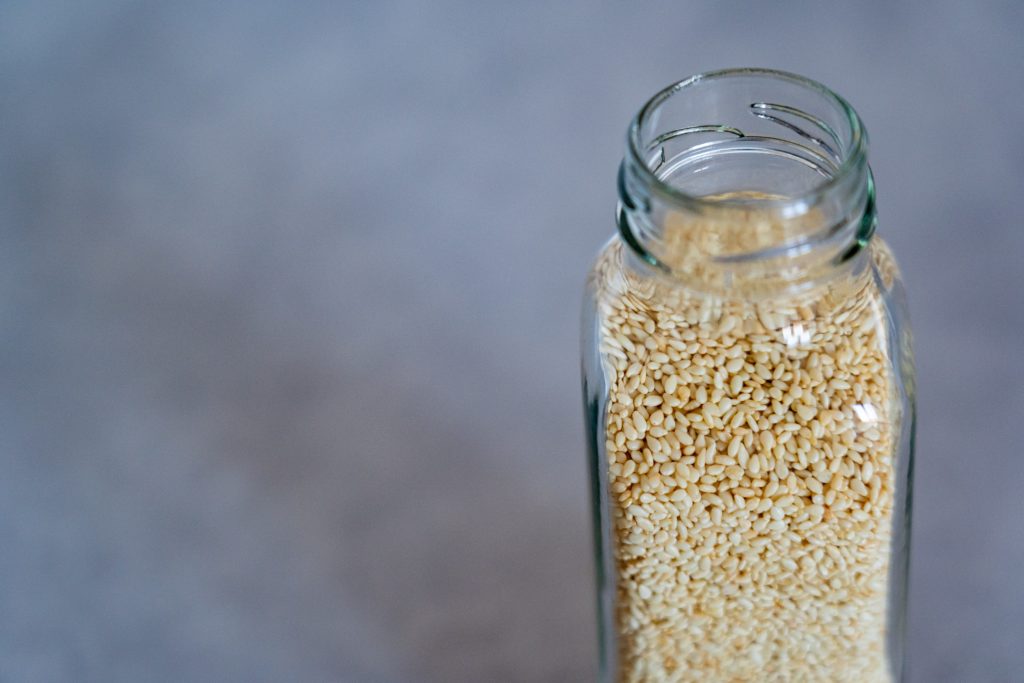
3. Benne Oil
What is it: Part of the sesame seed family, benne is from West Africa, where it was grown in gardens as an easy additive to other foods, especially when meat was scarce. As an ingredient, it has become intrinsically linked to American culture, as the slave trade saw imports of not only people but indigenous crops and cooking styles into southern states. Benne can be used as you would any sesame seeds, as a topping, snack, baking ingredient or, most commonly, oil.
How to cook it: Benne oil has a higher smoking point than a lot of others, making it great for high heat applications such as stir fry. Its unique and delicious flavour profile makes it perfect as a drizzling oil as well. As a salad finisher or noodle topper, it is hard to beat.
What does it taste like: Very nutty, rich and almost caramelised. There are definitely sweet notes to benne oil but not in such a way as to restrict use. This is an oil that will flavour whatever you cook with it, so be aware that it is not neutral, but a proper flavour deliverer. When used to cook other foods, it amplifies umami notes.
Where can it be bought: Benne oil and sesame seed oil are interchangeable, but look for a product that is sourced from Africa for better authenticity
Buy it online here.
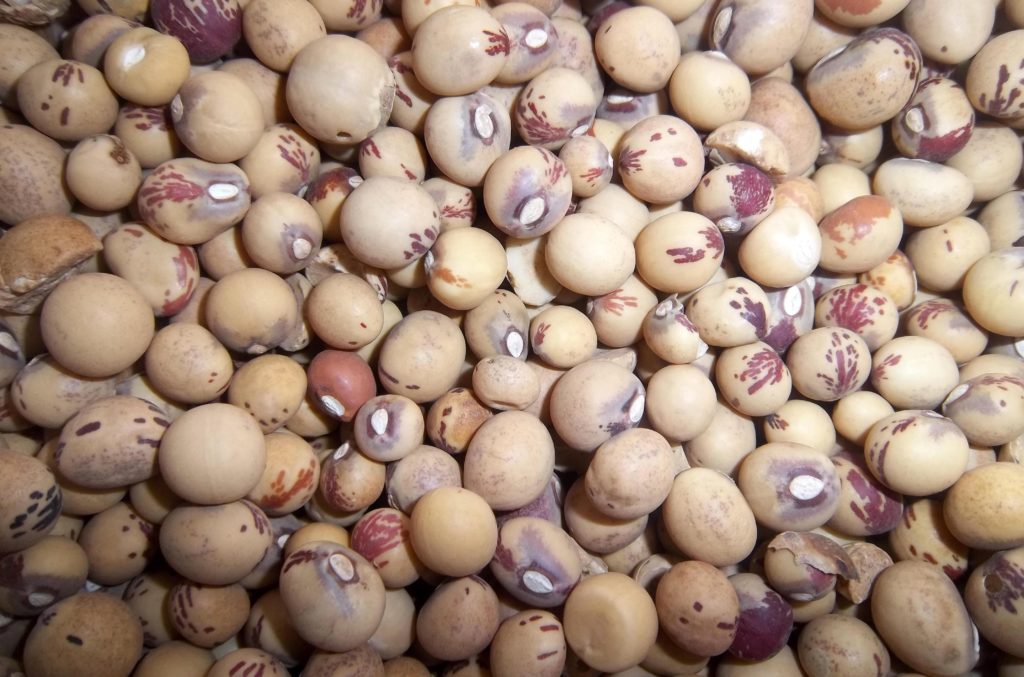
4. Bambara Groundnuts
What are they: Grown mainly in sub-Saharan Africa, bambara groundnuts are a high-resistance, good yield crop, classified as a legume. It is socioeconomically significant, being almost as popular and widely grown as peanuts and cowpeas. Easy to grow and hardy to disease, bambara groundnuts develop similarly to peanuts, in a pod. It is thought to be a natural remedy for insomnia as well.
How to cook them: Bambara can be eaten fresh from the pod, boiled in salted water like peanuts or roasted, as an easy snack. Traditional applications include okpa Enugu, which uses bambara flour to make a steamed and spiced dish that is reminiscent of a sliceable set custard. This is a phenomenal way to use the ingredient and needs very little additional flavouring, as the bambara offers all you need.
What do they taste like: when fresh and uncooked, they have a very light and natural taste, not unlike edamame or raw chickpeas. Very pleasant and delicate. When cooked, they take on a far nuttier and sweeter note. Many people would be able to draw comparisons to chickpeas and pinto beans, though there is more of a honey note here.
Where can they be bought: Growing in popularity away from Africa, some health food stores might already have bambara groundnuts. Heading online will give you faster and more reliable access to them. Some companies are developing milk with the nuts as well.
Buy them online here.
Lead photo by Photo by Vie Studio from Pexels.


